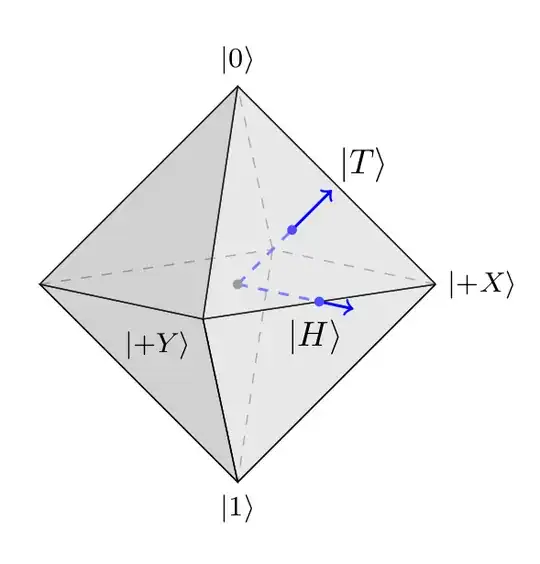I am learning magic state distillation.
We can define the following two states:
$$ |T\rangle \langle T | = \frac{1}{2}(I+\frac{1}{\sqrt{3}}(\sigma_x+\sigma_y+\sigma_z))$$ $$ |H\rangle \langle H | = \frac{1}{2}(I+\frac{1}{\sqrt{2}}(\sigma_x+\sigma_z))$$
From those states, we can define the $T$ and $H$-type magic states as respectively the set of states $\{ U |T \rangle\langle T| U^{\dagger}| U \in C_1\}$ and $\{ U |H \rangle\langle H| U^{\dagger}| U \in C_1\}$, where $C_1$ is the Clifford group.
In this paper, it is claimed that there are eight magic states of the $T$ type, and twelve of the $H$ type.
I could do some "brute force" calculation to check that with mathematica. But I wondered if there is a way to understand it easily ?
Initially I tried the following: if I act with Clifford element, each the Pauli matrices entering for instance for $|H\rangle \langle H | $ would be changed in another single qubit Pauli matrix (up to $\pm 1$ or $\pm i$) and I then simply have to count for all the possibilities. But it seems more complicated than that. Indeed, for instance $\sigma_x + \sigma_y$ cannot be changed to $\sigma_z + \sigma_z$ by acting with a Clifford element (the $|H\rangle \langle H|$ wouldn't be pure anymore which is absurd). Thus the counting seems more complicated because some combination are actually impossible to occur and it does not seem easy at first view to find which one. This is probably not doable without brute-force but as I am not sure (there is probably some smart way to show it), I am asking here.
